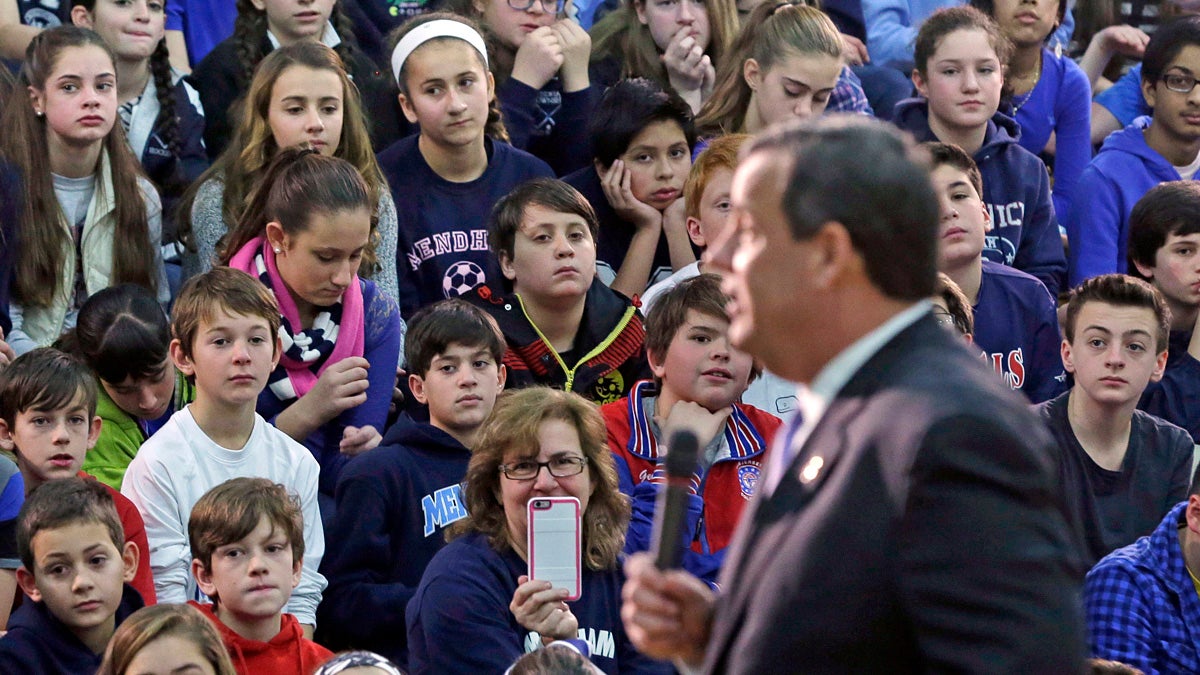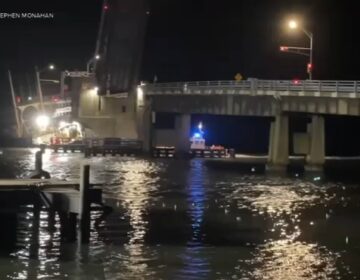Commentary: Gov Christie gives the bird to a school choice program almost everyone loves

(AP File Photo/Mel Evans)
“It’s a great program,” says New Jersey Senate President Steve Sweeney. It “meets an important need, and it does so utilizing New Jersey’s excellent public schools,” says New Jersey Education Association. “We knew there would be interest in this program because of enrollment trends” and we’re “very supportive,” says N.J. School Boards Association.
This object of this rare consensus among lobbyists and legislators — not to mention parents and students — is N.J.’s Interdistrict Public School Choice Program (IPSCP), which allows students to attend public schools in other districts even if their parents can’t afford to live there. But there appears to be one dissenter from this happy unanimity: the Christie Administration. While the Governor continues, as recently as this month’s State of the State address, to hawk a pipedream of parochial school vouchers, he has steadily diminished budgetary support for a program that offers a non-polarizing and popular form of school choice.
What gives?
A little history.
Back in 1999, the State Legislature approved a pilot interdistrict choice program, a rara avis in New Jersey’s gated zip code-driven crazy quilt of 600 school districts. The year before, Alan Karcher, former speaker of the Assembly, published a book called “New Jersey’s Multiple Municipal Madness.” The oft-cited study analyzes the state’s crazy quilt of 565 municipalities and 600 districts, more than any state per square mile, engendered by racism, lack of affordable housing, and zoning issues. Says Karcher, “[it] is a story that supports the conclusion that these lines are rarely the product of chance; rather, they were drawn by politicians with very human foibles and frailties.
Cue, one year later, IPSCP, which was intended to counteract those human foibles and frailties by allowing school districts with empty seats, up to one per county, to offer enrollment opportunities to children who lived outside N.J.’s formidable district boundaries. Parents and children lined up like Black Friday at Best Buy. Seats were scarce, in part because only 15 counties out of N.J.’s 21 had a volunteer school district. Never mind. The state paid a reasonable amount of tuition to the receiving districts, and 865 children and their parents were happy to elide the confines of zip code-based district assignments. As such, the IPSCP was a tiny jewel of public school choice.
Ten years later, in 2009, Senator Shirley Turner (D-Mercer) sponsored a permanent interdistrict bill that sensibly expanded offerings of the popular program. Said Sen. Turner, “Under this bill, children will no longer be sent to a particular school based solely on where they live, but will be able to seek out the kinds of programs they believe will help them succeed. The proposal was greeted with bipartisan applause and endorsements from educators and lobbying groups. Christie signed the bill in 2010 and New Jersey was so proud that it featured the innovative program in its Race to the Top application.
Here’s the problem: interdistrict choice worked too well and management was, well, frail. Those 15 districts willing to enroll non-resident children surged to 135. Those 865 children surged to 5,000. Accordingly, state payments increased to almost $50 million per year, a tiny fraction of N.J.’s $9 billion school aid budget but still a fungible allocation.
Last year the state Department of Education capped enrollment growth of the IPSCP at 5 percent in order to cut costs, despite bill language that concedes no such cap. And the current allocation of IPSCP seats is, well, full of foibles.
This week, for example, Lisa Wolff, President of Hopewell Township Regional School Board (Mercer County) lambasted the state for short-sheeting the program and leaving Hopewell in the lurch. Hopewell, a district with great schools and falling enrollment, was approved last year as a choice school — the only one in Mercer County — and seats were snatched up by children in less successful districts like Trenton and Ewing. In return, Hopewell received $176,000 in state choice aid.
Today if you go to Hopewell’s “Choice Program Profile” page in the DOE’s directory of IPSCP schools, the list of available seats is a big fat zero because of that bluntly-applied cap. But far more sparsely populated Hunterdon County will net $4.6 million in choice aid.
Clearly the state needs to delicately smooth out disparate funding wrinkles and control growth. But is the answer really a blunt hammer that shatters the integrity of a valued program that addresses N.J.’s ghettoized school infrastructure? At these prices we can do better than that.
__________________________________________
Laura Waters is vice president of the Lawrence Township School Board in Mercer County. She also writes about New Jersey’s public education on her blog NJ Left Behind. Follow her on Twitter @NJLeftbehind.
WHYY is your source for fact-based, in-depth journalism and information. As a nonprofit organization, we rely on financial support from readers like you. Please give today.





